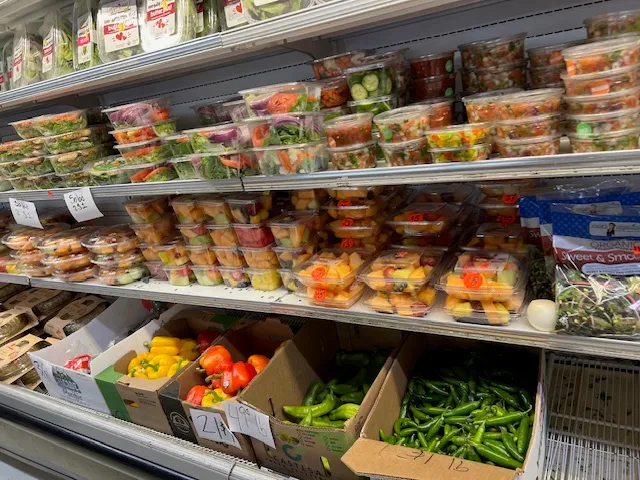Table of Contents
Introduction
Grey Mullet, known as Thirutha in Tamil and Bhangor in Bengali, is a widely consumed fish in coastal regions around the world. This hardy fish is valued for its rich flavor, versatility in cooking, and nutritional benefits. Found in both saltwater and freshwater environments, Grey Mullet is a staple in many traditional and modern cuisines. This article delves into the biology, culinary uses, nutritional profile, and market dynamics of Grey Mullet.
Biology and Characteristics
- Type of Fish: Grey Mullet is a euryhaline fish, meaning it can thrive in both saltwater and freshwater environments. It is commonly found in coastal waters, estuaries, and rivers.
- Average Size: The average length of Grey Mullet ranges from 30 to 75 cm (12 to 30 inches).
- Average Weight: It typically weighs between 1 to 3 kg (2.2 to 6.6 lbs), though some larger specimens can reach up to 8 kg (17.6 lbs).
- Color: The fish has a streamlined body with a bluish-gray or greenish back and silvery sides and belly.
- Fat Content: Grey Mullet is a moderately fatty fish, with a fat content of around 5-10%, making it a good source of omega-3 fatty acids.
Catching Methods
Grey Mullet is primarily caught using:
- Gillnetting: A common method in commercial fishing, where nets are used to trap the fish.
- Cast Netting: Used by small-scale fishermen in shallow waters.
- Trawling: Employed to catch larger quantities of fish in deeper waters.
Storage and Shelf Life
- Fresh Grey Mullet: When stored on ice or refrigerated, fresh Grey Mullet has a shelf life of 1-2 days.
- Freezing Methods: To extend its shelf life, Grey Mullet can be cleaned, gutted, and wrapped tightly in plastic or vacuum-sealed before freezing. Properly frozen, it can last up to 6 months.
- Shelf Life (Frozen): Up to 6 months at -18°C (0°F) or lower.
Nutritional Profile
Grey Mullet is a nutrient-dense fish, offering the following per 100-gram serving:
- Calories: 150-200 kcal
- Protein: 18-22 grams
- Fat: 5-10 grams (including omega-3 fatty acids)
- Vitamins: Rich in Vitamin B12, Vitamin D, and niacin.
- Minerals: Good source of selenium, phosphorus, and magnesium.
Health Benefits
- Heart Health: The omega-3 fatty acids in Grey Mullet help reduce inflammation and lower the risk of heart disease.
- Brain Function: High levels of Vitamin B12 support cognitive health and nerve function.
- Bone Health: Vitamin D and phosphorus contribute to strong bones and teeth.
- Immune Support: Selenium acts as an antioxidant, boosting the immune system.
Flavor and Culinary Uses
- Flavor: Grey Mullet has a rich, distinctive flavor with a slightly earthy and nutty taste. Its firm, flaky texture makes it suitable for various cooking methods.
- Color: The flesh is white to off-white, turning opaque when cooked.
Cooking Methods:
- Grilling: Grey Mullet's firm texture holds up well on the grill, often marinated with spices and herbs.
- Frying: Popular in Asian cuisines, Grey Mullet is often deep-fried or pan-fried with a crispy coating.
- Curries: In Indian and Southeast Asian cooking, Grey Mullet is used in spicy coconut-based curries.
- Baking: A healthier option, baked Grey Mullet can be seasoned with lemon, garlic, and herbs.
- Smoking: Smoked Grey Mullet is a delicacy in some regions.
Raw Consumption: Grey Mullet is not commonly eaten raw in sushi or sashimi due to its strong flavor and texture, which are better suited for cooking.
Global Demand and Market Value
- Main Producers: Countries like India, Indonesia, the Philippines, and Thailand are major producers of Grey Mullet.
- Exporters: Southeast Asian nations dominate the export market, supplying fresh and frozen Grey Mullet to global markets.
- Importers: The United States, European Union, and Japan are significant importers of Grey Mullet.
- Market Value: The price of Grey Mullet varies depending on size, quality, and region, but it generally ranges from $4 to $12 per kilogram.
Popularity in Indian and Asian Cooking
In India, Grey Mullet is a staple in coastal regions like Kerala, Tamil Nadu, and West Bengal. It is often used in:
- Kerala Fish Curry: A tangy and spicy dish made with coconut milk and tamarind.
- Tandoori Fish: Marinated in yogurt and spices, then grilled in a tandoor.
- Fried Fish: A simple yet flavorful preparation enjoyed with rice and dal.
In Southeast Asia, Grey Mullet is used in dishes like:
- Indonesian Pepes Ikan: Grey Mullet steamed in banana leaves with spices.
- Thai Pla Kapong Neung Manao: Steamed Grey Mullet with lime and chili.
Western Dishes
In Western cuisine, Grey Mullet is less common but still appreciated for its flavor. It is often:
- Grilled or Broiled: Served with lemon butter sauce or salsa.
- Fish Tacos: A popular dish in coastal regions of the United States.
- Ceviche: In Latin American cuisine, Grey Mullet is sometimes used in ceviche, marinated in citrus juices.
Conclusion
Grey Mullet (Thirutha / Bhangor) is a versatile and nutritious fish with a rich flavor and firm texture. Its popularity in Indian and Asian cuisines, coupled with its growing demand in Western markets, makes it a valuable seafood commodity. While it is not typically consumed raw, its adaptability to various cooking methods ensures its place in global culinary traditions. Whether grilled, fried, or curried, Grey Mullet continues to be a favorite among seafood lovers worldwide.








